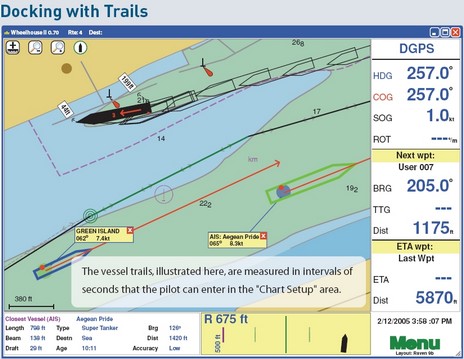AIS Class B worries, a rebbutal

My recent mention of Class B negativity elicited a lot of interesting comments, including a long post by Mr. Fred Pot himself. Fred, who I once profiled as “AIS man”, has now established himself as the Class B curmudgeon, not just the inspiration of Navagear’s “AIS Class B Naysayers, Unite!” but also a rather negative Class B sidebar to an otherwise enthusiastic AIS article by Steve Dashew in the current issue of PassageMaker. I count Fred as an industry friend, but I think he’s gone way overboard on this subject, as shown by a couple of points made in yesterday’s comment:
* Fred claims that “About 70% of commercial ships piloted into US harbors do not have a radar or an ECDIS (or ECS) that can show AIS targets on screen,” i.e. they’re not really monitoring AIS targets. Apparently he got that figure from “two pilots” at a conference, which means it’s hearsay, but is especially ironic as the figure ignores the fact that it’s the pilots who very often bring excellent AIS plotting to a ship’s bridge when it’s in challenging situations. I saw that big time last summer when I got to know Skip Strong, who pilots ships up and down my local Penobscot Bay. Now I’m confident that every ship I see out there is piloted by a conscientious professional equipped with a powerful AIS plotting tool, namely the Wheelhouse II software seen above. I think the same is true in many bays and harbors.
* Fred also figures that big ships will “un-clutter navigation displays by filtering out less important {Class B} targets.” Well, for starters, this worry doesn’t make sense with the one above. If the ships are not looking at AIS displays, then why the heck would they filter them? Plus, it seems to ignore the reality of which vessels will actually be using Class B transponders. I believe the Coast Guard still intends to expand mandated AIS, Class B allowed, to some 17,400 vessels. Here in Penobscot Bay and many other places, these are the big cross-bay ferries and ocean-going fishing boats that the ships (and pilots) really do want to know about.
Plus this worry predicates a cluttered screen, when in fact my experience is that the most dangerous ship encounters are offshore where the screens are uncluttered, but everyone’s relaxed and moving right along. I asked the gCaptain to survey his ship-running readers on this general subject and all seemed to agree that even if they had to filter out small targets in busy places they’d pay attention to everything outside the sea buoy. It was good to hear that, but not really surprising. While there are fools driving ships just like there are fools driving yachts, I think most mariners of either sort are trying to take in and integrate as much information as possible and avoid mishaps of any kind. Thus, despite what the good Captain Rodriquez suggests, I don’t think AIS “provides too much information.” For me, the more info the better means that if a Class B transponder only costs a few hundred dollars more than a good receiver, that’s the way to go. Sorry, Fred!

 Share
Share
Ben,
As a professional mariner for the past thirty years, I believe AIS is the greatest addition to maritime safety since radar. If the introduction of low cost Class B AIS systems encourage yachters to install them, it will make our jobs easier and save lives.
I completely agree with you that the most dangerous encounters occur offshore. We all know there have been too many incidents of yachts being run down by ships and it's usually the yacht operator's fault.
Fred Pot's hearsay is probably correct, but what's the point. Several years ago, a recently retired friend at the UKHO told me that worldwide less than 1/2 of a percent of commercial vessels were using dual ECDIS systems. Nevertheless, more and more commercial vessels are using an ECS that can display AIS targets on the screen. Besides, prudent mariners use every tool available.
While I've never been involved in a near collision with a ship; the same isn't true with yachts. Many of these boats are operated by people with limited skills, and yachts are much more difficult to detect offshore on radar, particulary if they do not have a radar reflector. Now, if yachters will purchase a Class B AIS AND a copy of the Navigation Rules and learn them, we'll all be safer and happier.
I think I can speak for my fellow professional mariners when I say that any tool that enhances safety at sea is welcome.
Jean